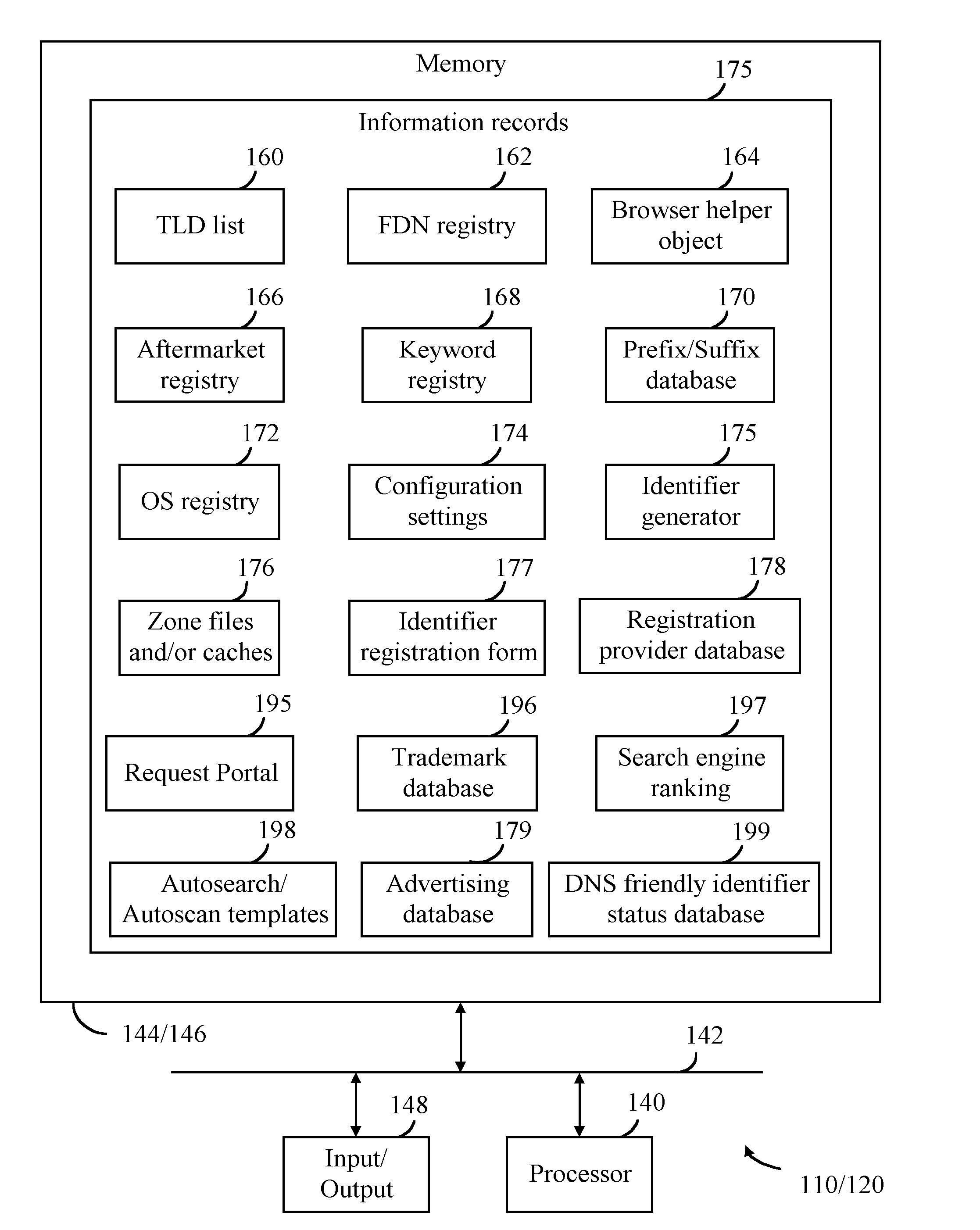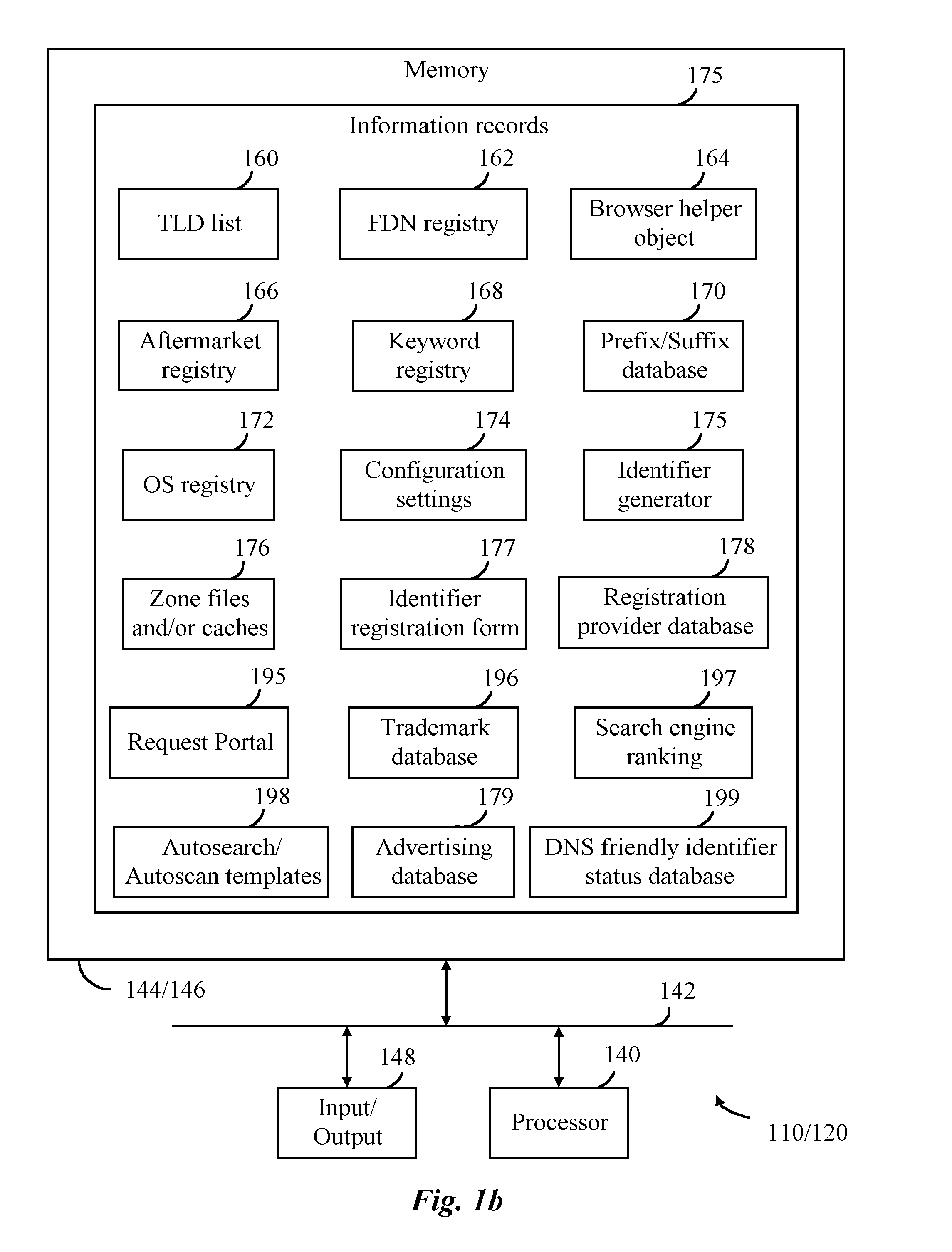Methods, Systems, Products, And Devices For Generating And Processing DNS Friendly Identifiers
a technology of identifying and domain name, applied in the field of identifying resolution and processing, can solve the problems of substantial pent-up demand for alternate domain name resources, inability to reach other internet users registering second-level domains in alternate tlds, and inability to monetize from such unresolvable parties, etc., to achieve the effect of immediate ubiquity of fdn usage on the intern
- Summary
- Abstract
- Description
- Claims
- Application Information
AI Technical Summary
Benefits of technology
Problems solved by technology
Method used
Image
Examples
Embodiment Construction
[0095]The present invention will now be described with reference to the drawings, wherein like reference numerals are used to refer to like elements throughout.
[0096]FIG. 1a illustrates an exemplary system for providing a distributed computer system 100 in accordance with one aspect of the present invention and may include client computers or any network access apparatus 110 connected to server computers 120 via a network 128. The distributed system 100 may include client computers or any network access apparatus 110 connected to server computers 120 via a network 128. The network 128 may use Internet communications protocols (IP) to allow clients 110 to communicate with servers 120. The communication device of a network access apparatus 110 may include a transceiver, a modem, a network interface card, or other interface devices to communicate with the electronic network 128. The network access apparatus 110 may be in operative association with and / or include a Global Positioning Sy...
PUM
 Login to View More
Login to View More Abstract
Description
Claims
Application Information
 Login to View More
Login to View More - Generate Ideas
- Intellectual Property
- Life Sciences
- Materials
- Tech Scout
- Unparalleled Data Quality
- Higher Quality Content
- 60% Fewer Hallucinations
Browse by: Latest US Patents, China's latest patents, Technical Efficacy Thesaurus, Application Domain, Technology Topic, Popular Technical Reports.
© 2025 PatSnap. All rights reserved.Legal|Privacy policy|Modern Slavery Act Transparency Statement|Sitemap|About US| Contact US: help@patsnap.com



